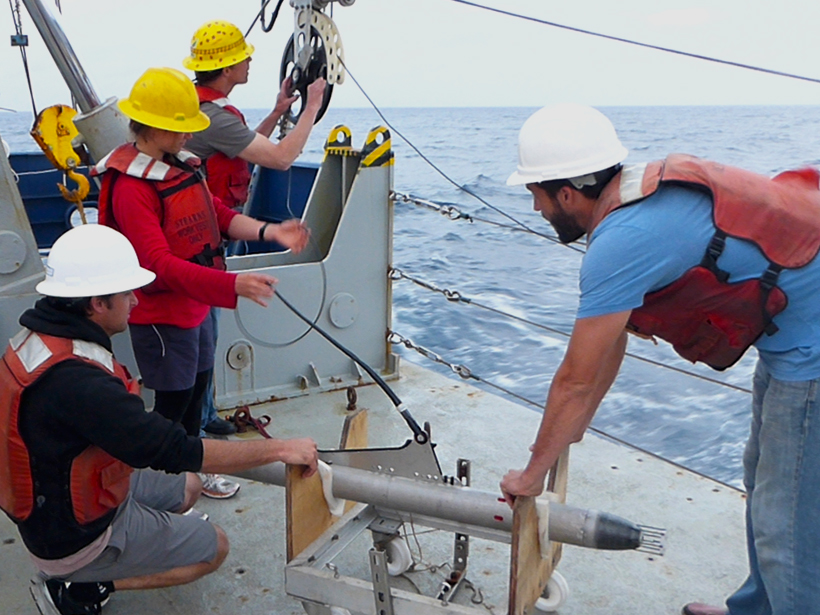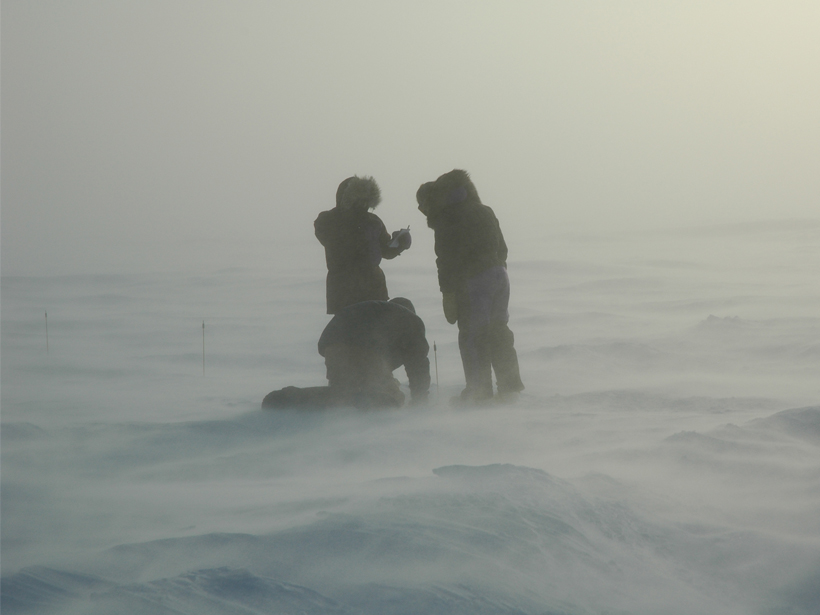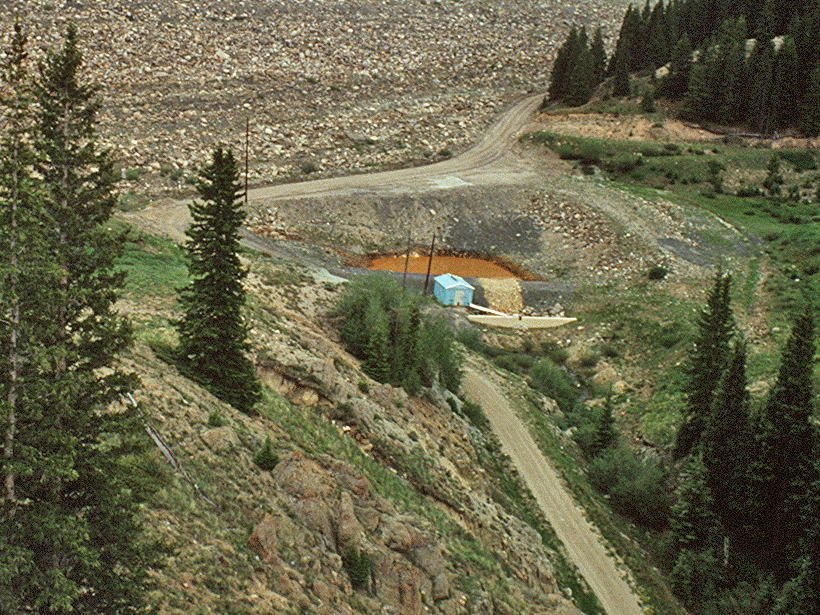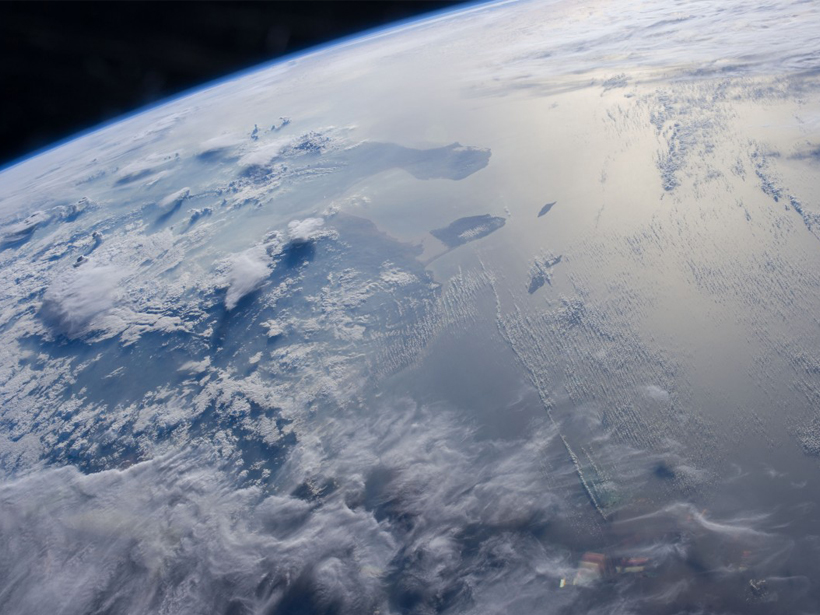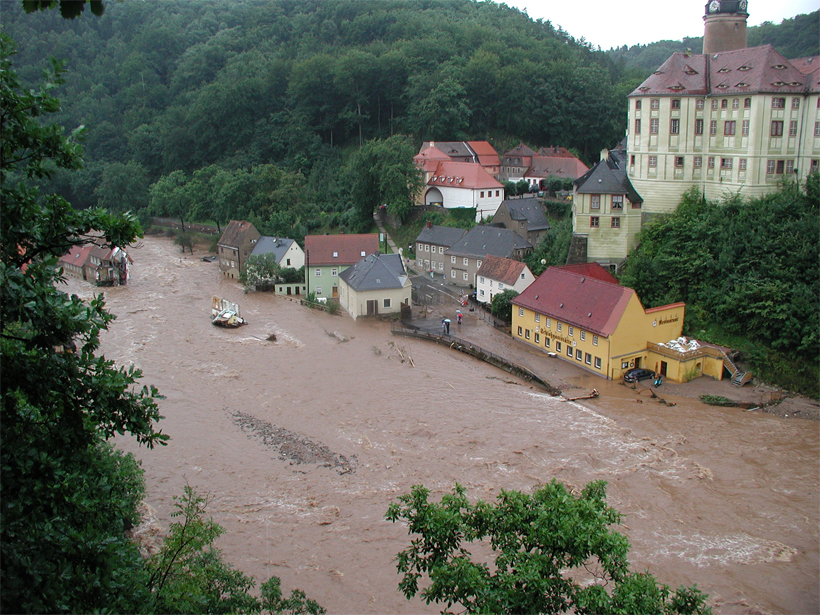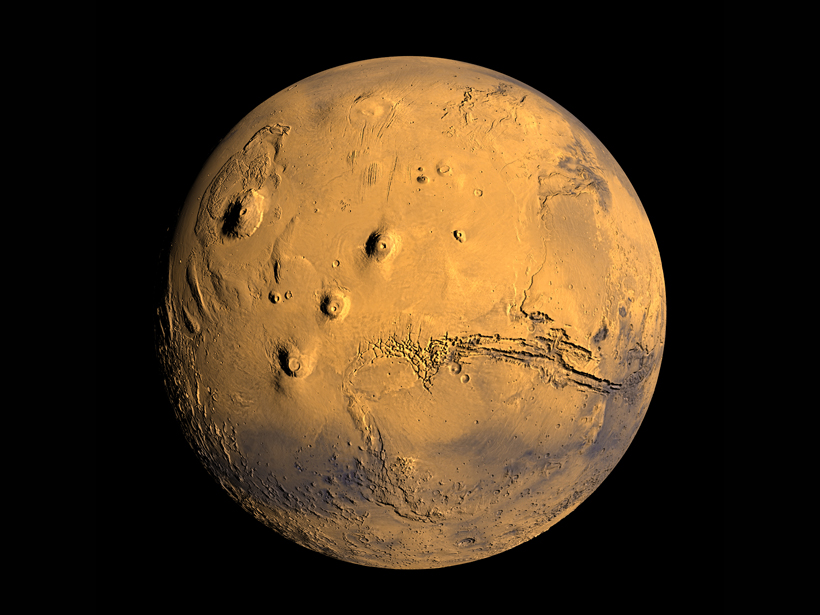By studying how underwater waves strike the continental slope off Tasmania, researchers seek to uncover the mechanisms that keep the circulation of the global ocean in balance.
Authors who want CC-BY-NC 2015
Improving Representation of Snow on Sea Ice in Climate Models
Snow on Sea Ice Workshop; Barrow, Alaska, 29 April to 1 May 2015
New Reactive Barrier May Protect Groundwater from Mine Waste
Researchers are developing a porous concrete filter to pull harmful dissolved metals out of water.
Sea Surface Temperatures on the Rise in the Caribbean
A 30-year climate analysis reveals an increase in sea surface temperatures in the Caribbean, the Gulf of Mexico, and the surrounding region.
What Makes Jupiter's Aurora Pulse?
The aurora crowning Jupiter's poles—the most powerful in the solar system—flares up when plasma is injected into its magnetic field.
Better Forecasting for the Next Volcanic Eruption
The Eruptive Precursors project in Campi Flegrei, Italy, seeks to understand conditions leading to caldera eruptions.
Rising Temperatures Release Methane Locked in the Seabed
New research shows that when ice in the seafloor melts, single-cell organisms metabolize the methane released, preventing the greenhouse gas from reaching the atmosphere.
The Element of Surprise in Managing Flood Risk
A social science perspective on unpredictable flood risk systems may help us expect the unexpected and mitigate flood damage.
The Dwarf Planet That Came in from the Cold—Maybe
The presence of ammonia-rich clay on much of the surface of Ceres suggests that this dwarf planet—the largest object in the asteroid belt—may have formed far out in the solar system, then wandered in.
3-D Models Put Scientists, Students in Touch with Planets
Three-dimensional printing gives planetary scientists new ways to explore distant worlds and engage students.

